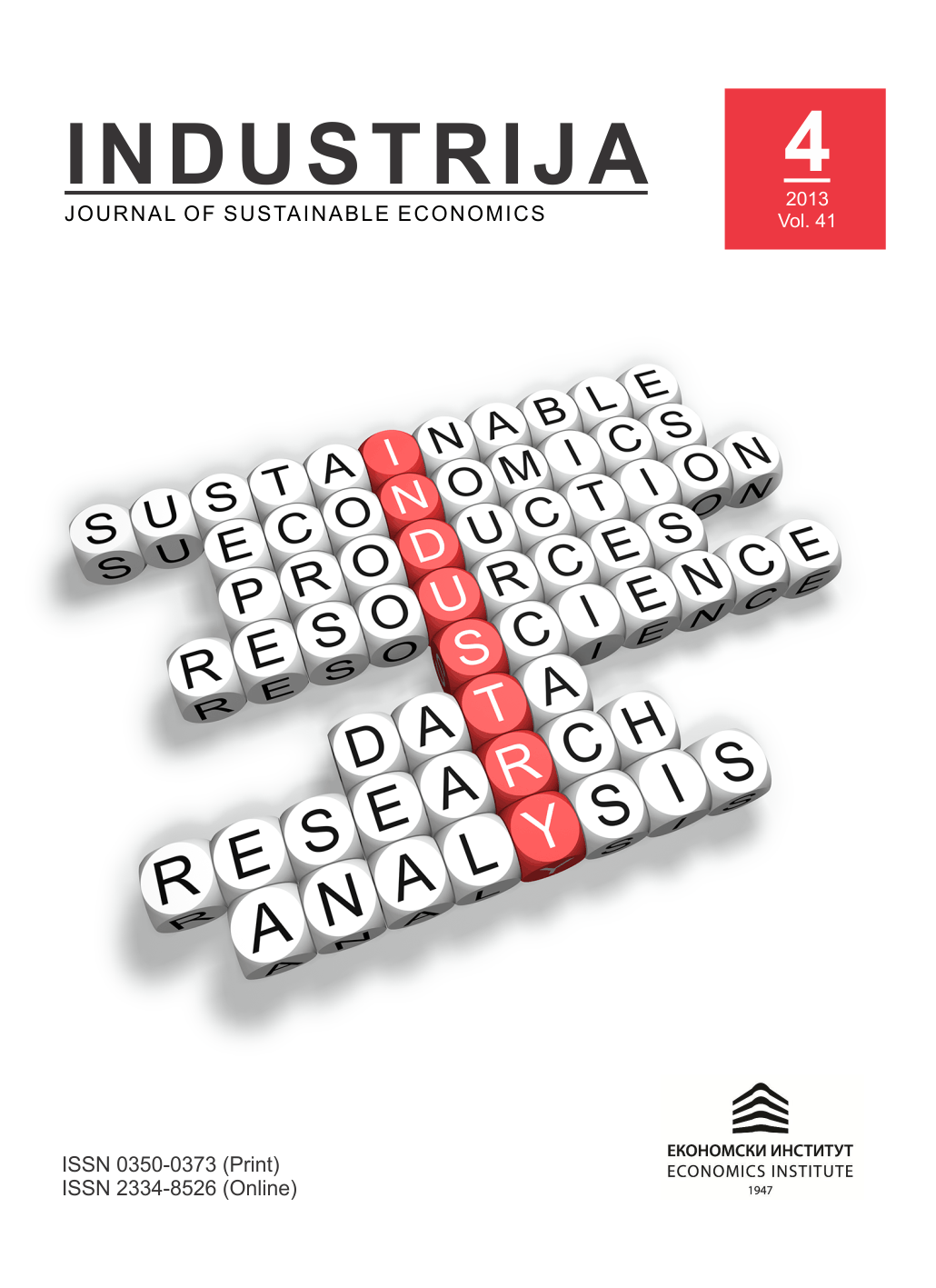Linkage Between External and Internal Imbalance – The Case of Serbia
Abstract
After a while almost all transition and emerging countries that have entered into the process of economic reforms became attractive for foreign direct investments and foreign loans. Consequently, huge amount of capital inflow lead to the surpluses in the financial-capital account. Capital that has entered the system usually converts into the local currency and thus contributes to the growth of money supply in the system. However, high level of money supply leads to internal imbalances such as relatively high inflation and unstable exchange rate. In this paper we will try to give an answer to whether above described scenario is characteristic for Serbian transition economy. In this process we will use linear regression, vector auto-regression (VAR) and error correction model.
References
Ahmed, E.M. (2012). Are the FDI inflow spillover effects on Malaysia's economic growth input driven. Economic Modelling, 29, 1498-1504.
Akaike, H. (1974). A new look at statistical model identification. IEEE Transactions on Automatic Control, 19(6), 716-723. doi:10.1109/TAC.1974.1100705
Banerjee, J.J.A., Dolado, D.F., & Smith, H.G.W. (1986). Exploring equilibrium relationships in econometrics through static models: some Monte Carlo evidence. Oxford Bulletin of Economics and Statistics, 48, 253-277.
Dickey, D.A., & Fuller, W.A. (1979). Distribution of the Estimators for Autoregressive Time Series With a Unit Root. Journal of the American Statistical Association, 74(366), 427-431. doi:10.2307/2286348
Engle, R.F., & Granger, C.W.J. (1987). Co-Integration and Error Correction: Representation, Estimation, and Testing. Econometrica, 55(2), 251-276. doi:10.2307/1913236
Jinjarak, Y., & Sheffrin, S.M. (2011). Causality, real estate prices, and the current account. Journal of Macroeconomics, 33, 233-246.
Kamin, S.B., & Wood, P.R. (1997). Capital Inflows, Financial Intermediation, and Aggregate Demand: Empirical Evidence from Mexico and other Pacific Basin Countries. In International Finance Discussion Papers, Board of Governors of the Federal Reserve System.
Kannan, R., Rabanal, P., & Scott, A. (2011). Recurring patterns in the run-up to house price busts. Applied Economics Letters, 18, 107-113.
Lane, R.P., & Milesi-Ferretti, G.M. (2007). Capital flows to central and Eastern Europe. Emerging Markets Review, 8, 106-123.
Makin, J.A., & Narayan, P.K. (2013). Has international borrowing or lending driven Australia's net capital inflow. International Review of Economics and Finance, 27, 134-143.
Mallick, S.K., & Sousa, R.M. (2012). Real effects of monetary policy in large emerging markets. Macroeconomic Dynamics, 16, 190-212.
Ostry, J.D., Ghosh, A.R., Chamon, M., & Qureshi, M.S. (2012). Tools for managing financial-stability risks from capital inflows. Journal of International Economics, 88, 407-421.
Schwarz, G. (1978). Estimating the dimension of a model. Annals of Statistics, 6(2), 461-464. doi:10.1214/aos/1176344136
Sims, C.A. (1980). Macroeconomics and Reality. Econometrica, 48(1), 1-48. doi:10.2307/1912017
Tillman, P. (2013). Capital inflows and asset prices: Evidence from emerging Asia. Journal of Banking & Finance, 37, 717-729.
National Bank of Serbia Retrieved from www.nbs.rs

